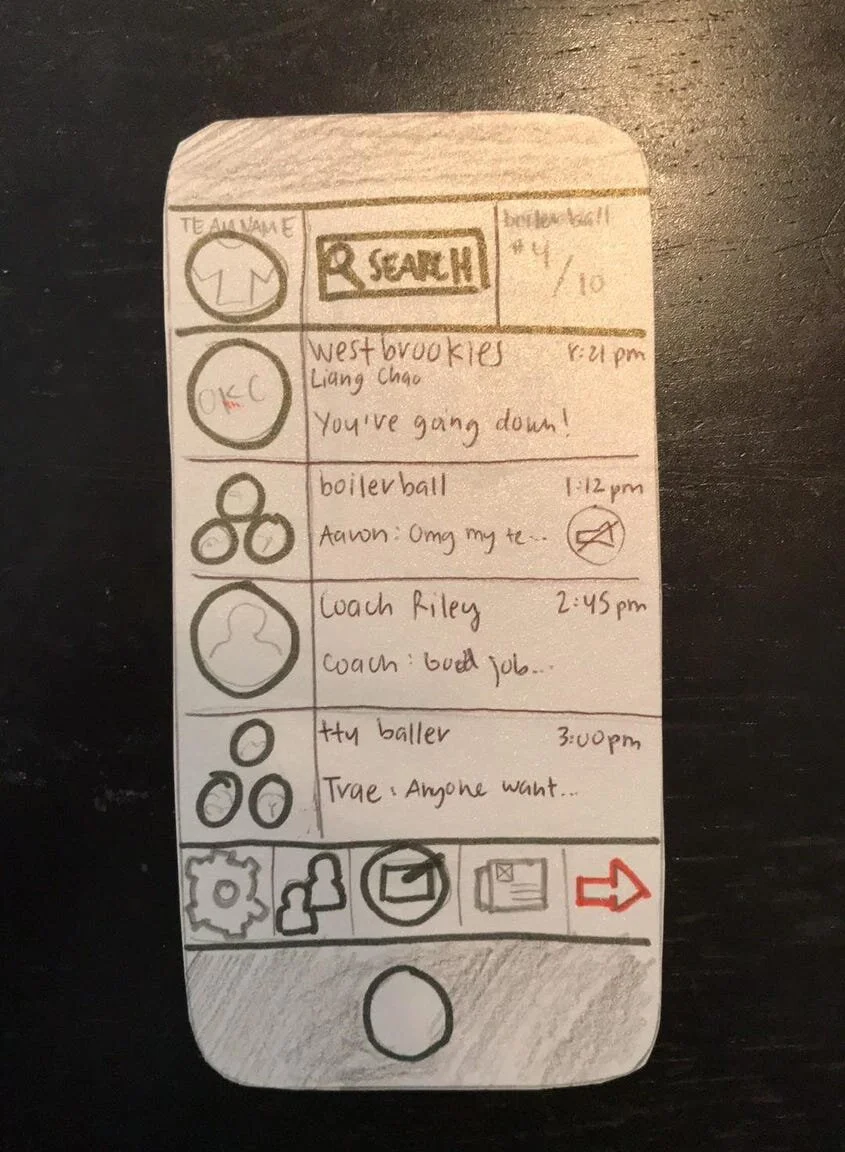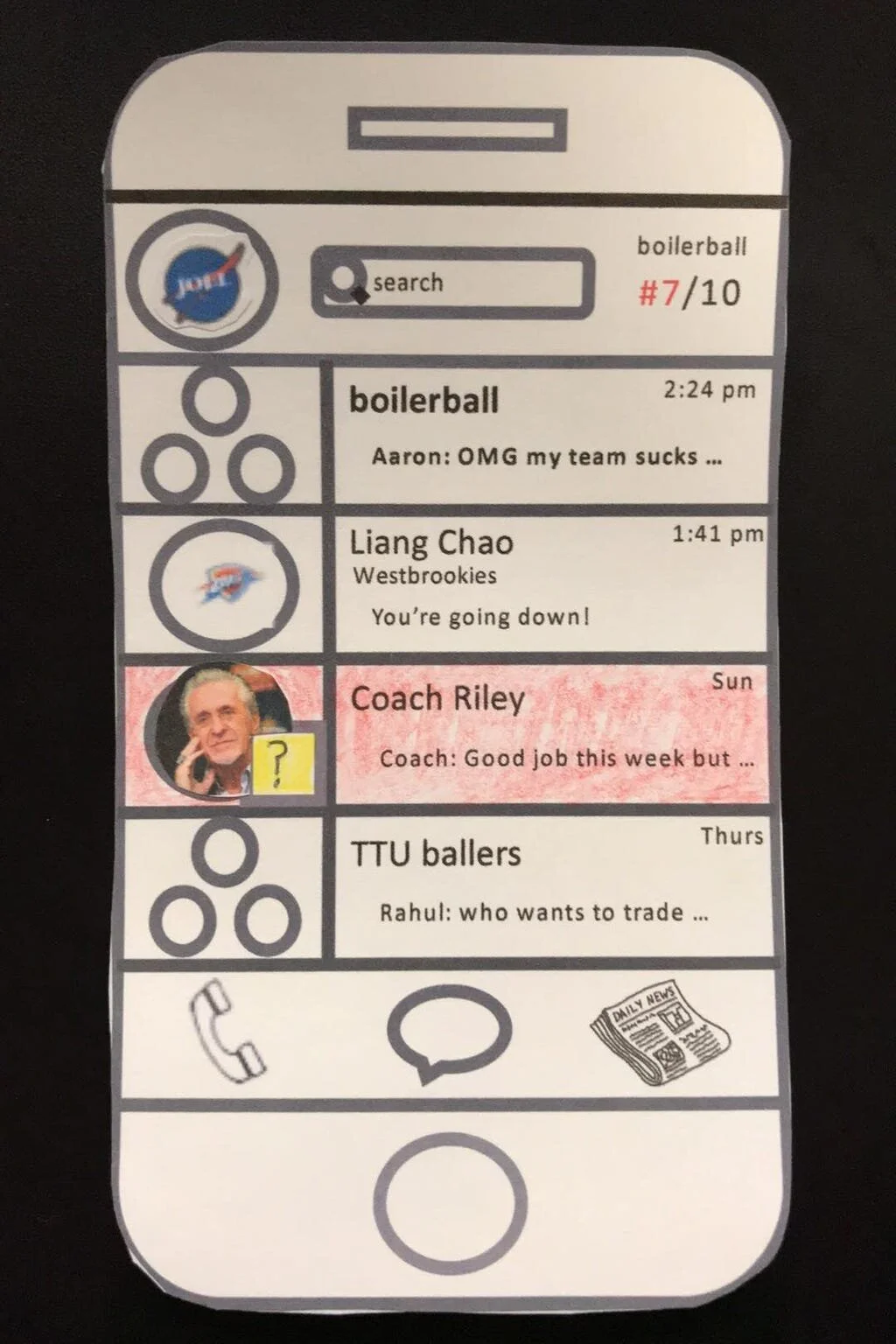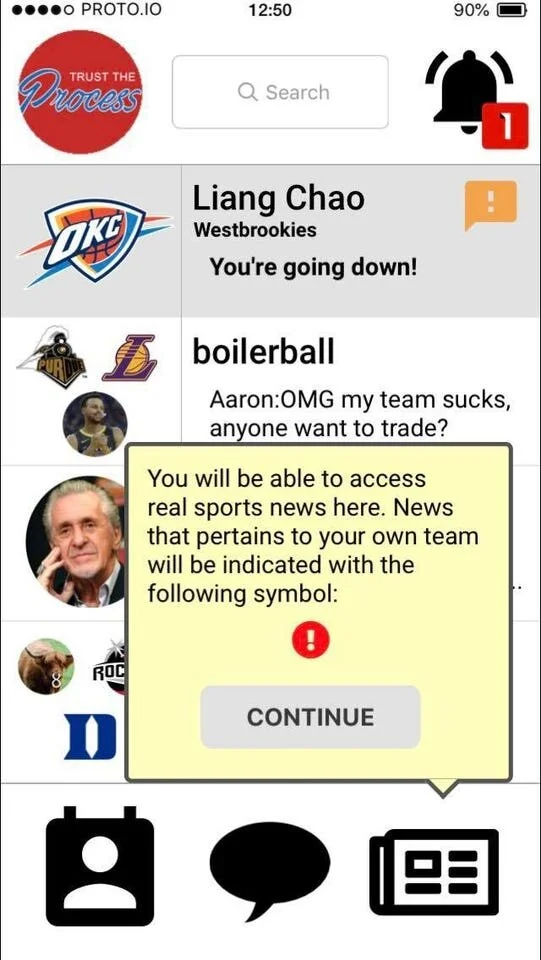Enhancing Long-Term User Retention in Fantasy Sports Through UX Design
Context
Fantasy Sports is an online game where users assemble imaginary teams with real, professional players. For example, for the NBA fantasy league, the league lasts the entirety of the NBA regular season (approximately 25 weeks). An issue observed with Fantasy Sports is that although many fantasy sports platforms have a messageboard directly on the game, many users indicated that the communicate through some separate form of social media (Facebook Messenger, GroupMe, etc.) in order to discuss Fantasy Sports.
The objective of this project was twofold:
Create a user friendly messaging service directly on the app so that users stay in the Fantasy Sports rather than leaving the app to message other users
Improve the UX of the game so that users will continue playing the game throughout the 25-week season
Team
Tools: Hand Sketches, Proto.io
Methods Used: Interviews, Personas, Quantitative Analysis, Secondary Research, Usability Testing
Time Frame: Fall Semester
Interviews & User Profiles
For a better understanding of who the users for the ESPN Fantasy sports app were, I first interviewed 5 users who were currently playing fantasy sports during the 2018-2019 NBA season. I wanted information about demographics, personal characteristics, social characteristics and sports knowledge.
As a result of the interviews and the researcher’s prior knowledge, we hypothesized that there are two categories of users: the casual sports fan and the expert sports fan. We used these results to create user profiles.
1. The Casual Sports Fan Motivation for Playing Fantasy Sports:
Entertainment
Social activity
More likely to quit playing the game out of frustration
2. The Expert Sports Fan Motivation for Playing Fantasy Sports:
Entertainment
Social activity
Competition
A way to "keep up" with the NBA
Less likely to quit playing the game out of frustration
Casual Sports Fan
This fan is knowledgeable in sports and their interest in sports has led them to play fantasy sports. This user likely played sports competitively at some point of their lives.
Their social circles may consist of other sports fans. They play fantasy sports for fun and mostly social reasons with their friends but are not likely to play other e-sports (e.g., Madden, NBA 2K).
Although they try to watch sports game on TV, they watch casually (whenever it is on or if there is a “big game”). They do not usually follow sports other than that. For example, they are unlikely to read sports articles online, go to an actual game or follow players on social media.
Expert Sports Fan
This fan is extremely knowledgeable in sports. Like the casual user, they also play fantasy sports for fun, but they are more competitive about the game. These users are more likely to research player statistics, and actively seek out trades from other players in the game.
Aside from fantasy sports, they also probably play other e-sports. This player most certainly has played competitive sports at some point in their lives. Most of their friends also share sports interests.
Not only do they watch games on TV and follow their teams, but they also will watch whatever game is playing, even if they have no connection to the team. Additionally, they follow sports outside of watching games, such as listening to sports podcasts, reading sports articles online, going to games and following their favorite players on social media.
Case Study
Below is data was obtained by analyzing a single 12-person fantasy basketball league. I identified the date that a user stopped updating their fantasy team. Users that stopped setting their teams are thought to have quit the game because they are no longer engaged with their league. I also followed with with interviews to determine why players either continued playing or stopped playing.
Another identifier of engagement is number of moves made by a user. Moves can constitute the trading of players, dropping a player, or adding a player. Each member of the fantasy league was also interviewed in order to determine why they kept playing the game throughout the season or why they quit.
In this case study, it was found that only 5 out of 12 players played the game for the entire season.
Finding: User tend to quit playing fantasy sports when they begin to lose.
Why? The game is too long (almost 7 months) and is difficult for beginners to pick up.
Amount of Weeks Played and # of Trades Made by Participants in a Fantasy Basketball League
"[Fantasy Sports] is a game of endurance...whoever can keep up with it the longest from October to April usually wins. ESPN could make it easier for people that are just getting into Fantasy Sports."
— Participant 2
Lastly, a customer review audit was completed in order to identify pain points that were not observed in the user research using our convenience sampling. Going through reviews that concerned the message-board, additional issues were found that were experienced by a large number of users.
Some issues that were found by looking specifically at the customer reviews included the following:
Lack of ability to send photos, "gifs", etc. to other league members
Users are not notified when a message is received
Unable to post polls to make league decisions
Unable to "react" to other member's messages
It was then a priority to ensure that these issues would be resolved for the iterations of the new message-board system.
Customer Review Audit
Prototyping and Testing
Based on the user data that was collected, I strategized a list of features to improve the playability and social aspect of the game, focusing on retaining casual fans since they are more likely to "quit" the game. Features were integrated into the app and were either (1) kept, (2) cut or (3) refined based on feedback in 3 rounds of testing.
Paper & Low-Fidelity Prototyping. Three rounds of iterative testing were conducted with representative users, where after each round of testing, feedback was incorporated for the following round of testing:
Round 1 of testing used low-fi "sketch" paper prototypes (Images 1-2 below)
Round 2 of testing used low-fi prototypes with computer rendered images (Images 3-4)
Round 3 of testing used mid-fidelity prototypes created via proto.io where participants could interact with the prototype on an iOS device (Images 5-6)






Final Report & Presentation
A final slide deck was presented to the class summarizing the user research, iterative testing, and design refinements completed throughout the project. Each testing round informed updates to the prototype and generated new recommendations for the next iteration. I also outlined organizational goals for ESPN Inc. and provided a rationale for how an improved messageboard experience would support both casual and expert fantasy sports users. The project concluded with a final set of design recommendations and a proposed future testing plan.



